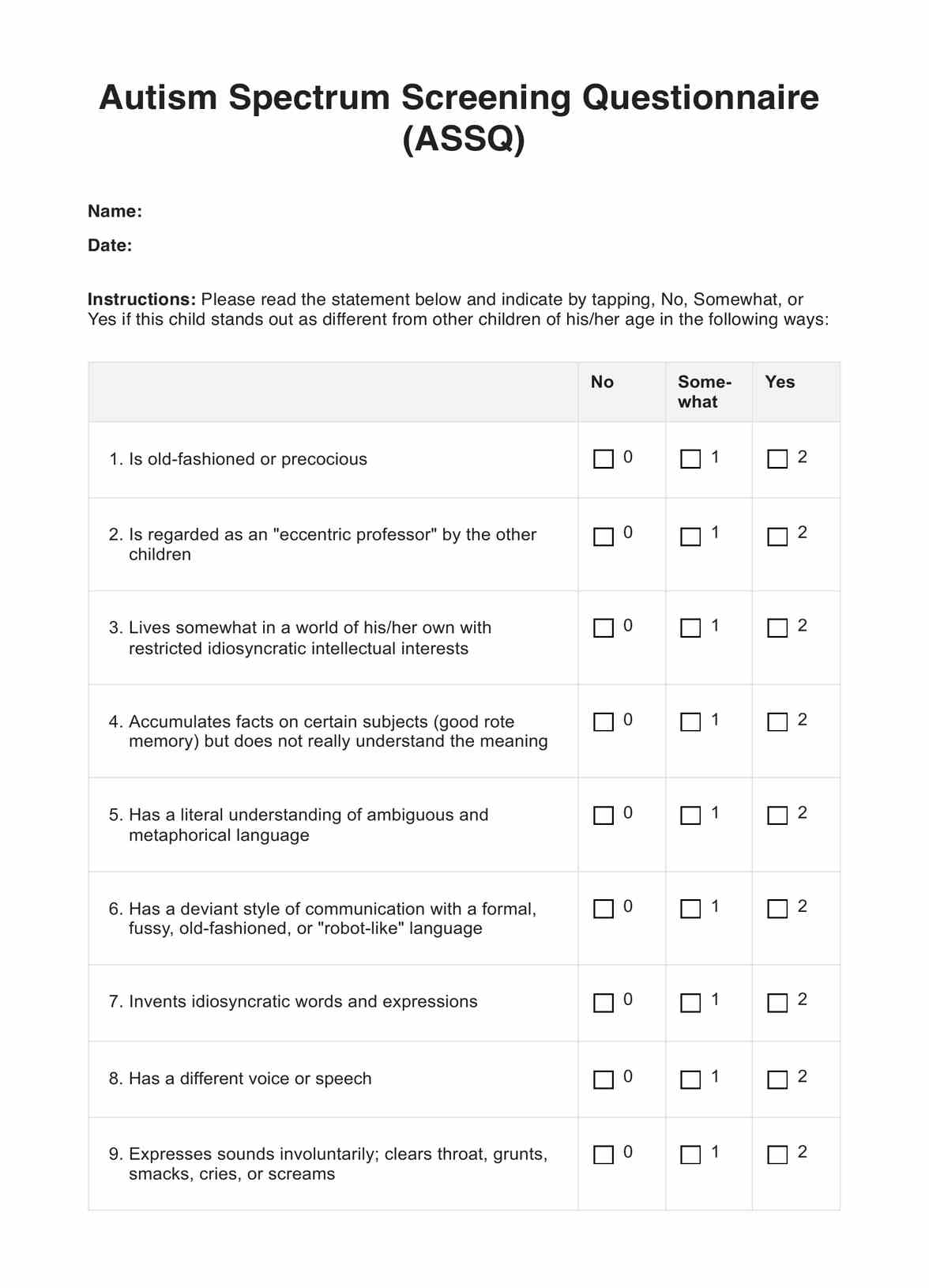The Autism Screening Questionnaire is typically used by parents, teachers, healthcare providers, and mental health professionals to screen for potential ASD in children and adolescents.

Autism Spectrum Screening Questionnaire (ASSQ) Guide
Discover the Autism Spectrum Screening Questionnaire (ASSQ), an essential tool in initial autism screening. Download our free PDF for detailed insights.
Autism Spectrum Screening Questionnaire (ASSQ) Guide Template
Commonly asked questions
This questionnaire is used when a child or adolescent displays behaviors that may suggest ASD, such as difficulties with social interaction, communication, or restrictive or repetitive behaviors.
The ASSQ is a fillable form with 27 items scored from 0 (not true) to 2 (certainly true). Once all items are completed, the scores are added together, and a total score of 13 or above may suggest the need for a more comprehensive ASD assessment.
EHR and practice management software
Get started for free
*No credit card required
Free
$0/usd
Unlimited clients
Telehealth
1GB of storage
Client portal text
Automated billing and online payments











